More...
By Mary Lee Duff, LEED AP, Associate IIDA | Senior Director of Strategy | May 31, 2018
BETTER CHOICES BY DESIGN SUPPORT FREEDOM OF CHOICE.
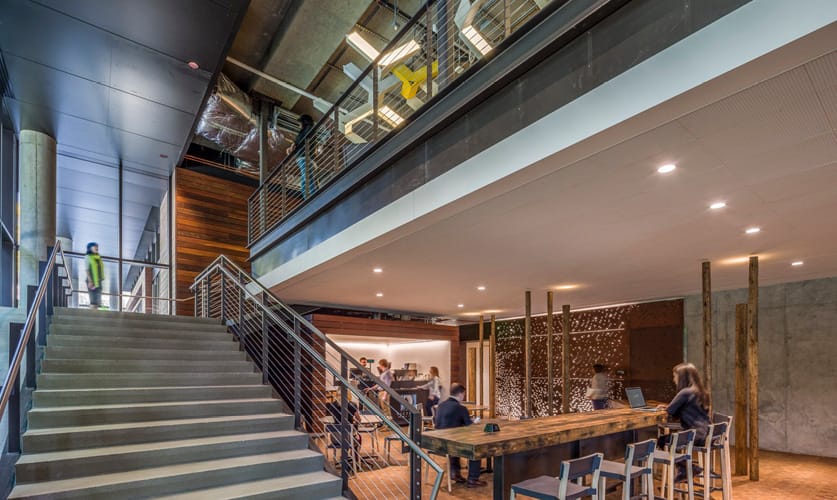
In 2008, Richard Thaler (economist and professor of Behavioral Science and Economics at the University of Chicago) and Cass Sunstein (legal scholar and founder of Harvard Law School’s Program on Behavioral Economics and Public Policy) coined the phrase choice architecture, along with the concept of libertarian paternalism. Explicated in Nudge: Improving Decisions about Health, Wealth, and Happiness, a book they co-authored, the idea was brilliant—support peoples’ right to choose, but care enough to stack the deck towards successful choice. Today, choice architecture is a key factor in strategizing the client experience and enhancing workspace utilization.
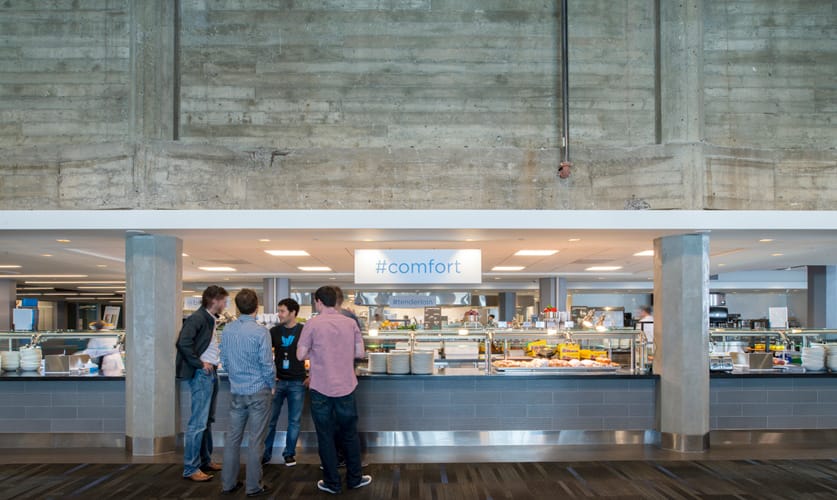
Choice architecture involves three key elements that affect curated choices.
- Default – happens when a user does nothing. For example, you leave your computer on; the system logs you out and the screen saver comes up. Since default options have a high likelihood of being selected, they need to be carefully considered and thought through before implementation.
- Feedback – a cue that points to a positive choice. Thaler used the example of light bulbs, popular at the time in Southern California, that glowed darker shades of red as consumers used higher levels of energy. The visual feedback was a reminder that influenced choice and helped reduce energy consumption by 40 percent during peak periods.
- Expecting error – scenarios that anticipate a likely problem. A wonderful example is the Paris subway card which can be inserted in any of four ways to gain entrance. Similar machines only function when the card is inserted one way. The expectation is error so why not make all the options work equally well?
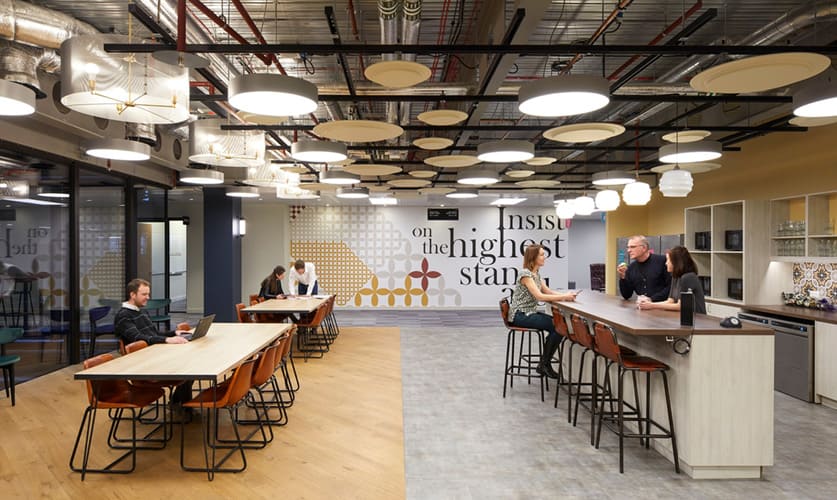
With purposeful intent, strategists and designers develop features in the work environment that influence choice and help meet client goals. An example of the first key element, default, is the placement of a communal table in a café or open area where staff can gather, exchange ideas, or even sit alone and focus on work in parallel with those in conversation. A communal table is a popular design feature that creates a flexible space and encourages collaboration—prime objectives for many of our clients.
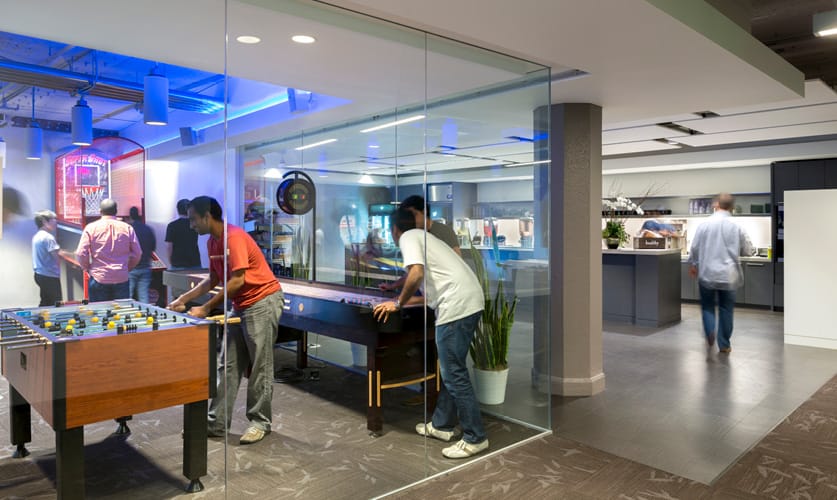
The use of a digital meeting room manager is a good example of a feedback system that improves the efficiency of finding available space for ad hoc meetings. The careful selection of colors is a more subliminal feedback system, suggesting the type of behavior anticipated in a work area. Vibrant colors promote energy and buzz while quieter tones can suggest lowered voices and heads-down work. A space itself can provide feedback. The transparency created by the use of glass walls can visually signal permission to use the space. An example is a transparent game room. Staff can see others using the space which informs their understanding of the space’s purpose.
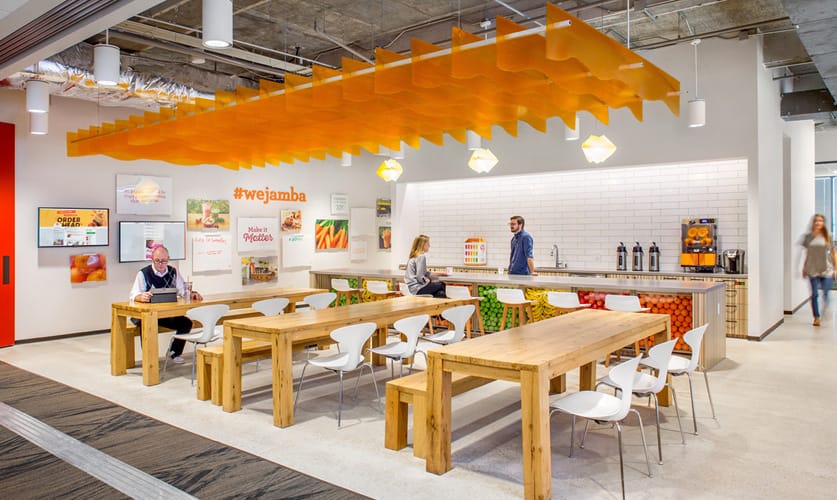
Expecting error is a delightful concept. The implementation of light sensors assumes that occupants may forget to turn the lights off when they leave a room or area. The thoughtful positioning of food in a café or break area is another scenario where error or poor choice can be anticipated and deterred. We have several clients who purposefully place healthy food choices and snacks at the front of displays at visible height, while the more fat-filled and caloric choices are relegated to the back of the display or inconveniently located on high or low shelves.
Choice architecture is a powerful filter that designers use to plan a work environment that incorporates mental and physical cues as well as shortcuts to help users make better choices. The intent is to lead (nudge) staff towards more satisfying and productive options. How options are presented can influence choice without taking away the freedom of choice.
Like What You See?
Learn more about IA's approach to strategy. Click below to read "Strategy in 2018: Here Come GenZ!"
Choice architecture: customize your workplace experience like your Chipotle order!
